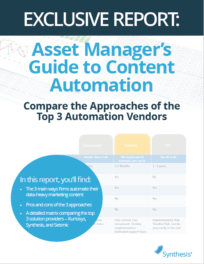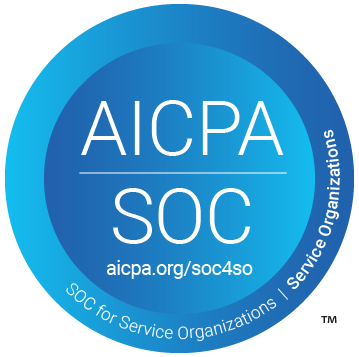Category Archives: Marketing Operations
7 Problems With Automating Factsheets In PowerPoint

Maintaining a strong and positive brand image is more important now than ever. Every contact with a client and every piece of material they see from your firm needs to be professional, timely and well produced. Even something as mundane as a poorly produced factsheet can be off-putting and give an investor pause to think about the overall quality of your operations. Yes, even in the digital age, quality design and typography in printed materials really matters. That’s why automating factsheets in PowerPoint is a bad idea.
A long-time head of marketing for a major asset manager once said to me: “If you look at the most successful companies in any industry, you’ll find that they share one thing in common; excellent branding.”
The Growing Importance of ADA Compliance for Investment Companies

The asset management industry stands at a pivotal crossroads where inclusivity and accessibility are not just niceties but necessities.
The growing importance of ADA (Americans with Disabilities Act) compliant investment marketing materials is a testament to the industry’s commitment to serving a diverse clientele, and also to the evolving regulatory environment in which they operate.
Around 20 million Americans (8% of the population) live with some level of visual impairment. ADA compatibility helps ensure that individuals with disabilities have equal access to financial resources and services, which is crucial in fostering an inclusive economy.
Four, No FIVE things to Look for in a Content Automation Solution

I’ve written and spoken frequently in the past about what asset management firms should be looking for as they evaluate content automation for production of their templated literature; fact sheets, commentaries, sales ideas, pitch decks etc. Indeed, this article is largely an update of one I wrote in 2021. I feel compelled to revisit the topic today, however, because of one key thing that seems to be driving a lot of decision making in the market today.
The four things described in the original blog remain as on point today as they were in 2021: data source flexibility, data visualization power, real scalability, and integration capabilities.
The fifth item is hidden in the discussion of the original four and I feel it should be brought to the forefront. And that item is: the total long-term cost of ownership of the solution.
Read More
The SEC’s New Modern Marketing Rule: Are You Prepared to Comply?

You’re probably already aware of SEC’s Modern Marketing Rule (Rule 206(4)-1), which replaces previous rules governing advertising by registered investment advisers, including asset managers and private funds.
You may even know these rules are scheduled to go into effect on November 4, 2022.
But does everyone in your firm who is involved in communicating with the public understand the new requirements? And, more importantly, is your firm on track toward meeting these requirements?
If you’re not, you’re not alone. According to Red Oak Compliance Solutions, less than 25% of their clients admit that they’ve fully instituted processes for complying with Rule 206(4)-1.
The good news is that most print and online marketing and advertising materials that asset managers produce already comply with SEC requirements.
However, the SEC’s new rules are designed to close certain loopholes, particularly concerning the way performance information is presented, as well as encompass the reality that messaging platforms like email and social media have become as important as pitchbooks, and web sites in conveying marketing and sales information to clients and prospects.
And, if that wasn’t enough, the SEC will now require asset managers to provide extensive documentation of the processes they used to create, review, approve and distribute advertising materials.
Is there a silver lining here? Perhaps, since the SEC is finally going to allow asset managers to use client testimonials and endorsements in their advertising.
Let’s take a closer look at the key provisions that will create the most work for asset managers—and what they need to do now to comply with the new rules.




 Compare the Top 3 Finserv Content Automation Vendors [White paper]
Compare the Top 3 Finserv Content Automation Vendors [White paper] Create Pitchbooks the Drive Sales [White paper]
Create Pitchbooks the Drive Sales [White paper] Build vs. Buy: Should Your Financial Services Firm Outsource or Insource Marketing Technology? [White paper]
Build vs. Buy: Should Your Financial Services Firm Outsource or Insource Marketing Technology? [White paper]  10 Tips for Rebranding your Fund Marketing Documents [White paper]
10 Tips for Rebranding your Fund Marketing Documents [White paper]




